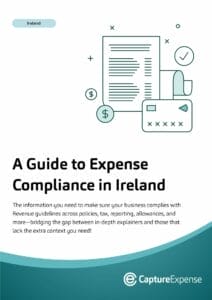If you’re running a business in Ireland and you’re VAT-registered (or need to be), filing your VAT return isn’t just a box to tick—it’s a legal must. But between Irish VAT rates, keeping track of your records and Revenue’s submission deadlines, the process can feel a bit overwhelming. The good news? Once you understand what’s required, it’s a lot more manageable than it seems. Read on to learn exactly how to do a VAT return in Ireland.
What are the VAT periods and return deadlines in Ireland?
If you run a business in Ireland, you need to know when your VAT is due and what your VAT period actually covers.
Let’s break it down:
Standard VAT periods (bi-monthly)
Most Irish businesses file VAT returns in Ireland every two months, starting from January. These are known as bi-monthly periods:
| VAT period | Deadline |
| Jan – Feb | 23 March |
| Mar – Apr | 23 May |
| May – Jun | 23 July |
| Jul – Aug | 23 September |
| Sep – Oct | 23 November |
| Nov – Dec | 23 January |
It’s worth noting that VAT returns in Ireland must be filed via Revenue Online Service (ROS).
Other VAT period options (authorised by Revenue)
In some cases, Revenue may allow alternative VAT periods based on your annual VAT liability or payment method:
| VAT period type | Who it’s for | Filing frequency | Deadline (ROS) |
| Annual | Paying by equal direct debit instalments | Once a year | 23 Jan (or agreed date) |
| Four-monthly | Annual VAT between €3,001 and €14,400 | 3 times a year | 23rd of the following month |
| Six-monthly | Annual VAT of €3,000 or less | Twice a year | 23rd of the following month |
| Monthly (on request) | If you’re regularly due VAT refunds | Every month | 23rd of the following month |
Don’t forget the RTD
At the end of each year, you’ll also need to file a Return of Trading Details (RTD). This form gives a full breakdown of your total sales and purchases, categorised by VAT rate.
It’ll pop up in your ROS inbox, and you’re required to complete it, even if all your VAT returns have already been filed correctly.

Get the latest insights and product updates, direct to your inbox.
How to do a VAT return in Ireland
Filing a VAT return in Ireland might sound a bit daunting, but once you get to know the layout of the VAT 3 form, it becomes much more straightforward.
Here’s how it works:
Step 1. Know what you’re reporting
The VAT 3 form is all about showing Revenue how much VAT you owe—or how much you’re reclaiming—for a specific VAT period.
Step 2. Fill in the key fields
Here’s a breakdown of what each part means:
| Box | What it means | What to include |
| T1 – VAT on sales | VAT you owe Revenue | VAT on your sales, services, EU purchases, imports (using VAT Postponed Accounting), and services you received (as appropriate). |
| T2 – VAT on purchases | VAT you can reclaim | VAT on your business expenses, EU acquisitions, imports, and services received. |
| T3 – VAT payable | What you owe | If T1 is greater than T2, this is what you pay Revenue (T1 – T2). |
| T4 – VAT repayable | What you’re owed | If T2 is greater than T1, this is the amount Revenue owes you (T2 – T1). |
It’s also important to note that if there’s no VAT due or reclaimable, just enter ‘0’ across T1 to T4—don’t write ‘nil’.
Step 3. Add your EU figures
If you’ve traded with other EU countries, there are a few extra boxes to complete:
| Box | What it covers |
| E1 | Value of goods sent to customers in the EU |
| E2 | Value of goods received from EU suppliers |
| ES1 | Value of services you’ve provided to EU customers |
| ES2 | Value of services you’ve received from EU suppliers |
| PA1 | Total value of imports using Postponed Accounting (including Customs value + duty) |
Step 4. File via ROS
All VAT 3 returns must be filed electronically using ROS.
Once everything’s filled in, double-check your figures, submit your return, and make any payments due.
There are a number of online methods available to you to make a payment to Revenue:
- ROS Direct debit instruction
- Single debit instruction (SDI)
- Direct Debit Instruction (DDI)
- Credit and debit cards
Doing your VAT returns in Ireland doesn’t have to be a headache—especially when you’ve got Capture Expense in your corner
Our platform takes the hassle out of managing receipts, tracking business expenses, and keeping accurate records, so when it’s time to file your VAT 3, everything you need is already in place. Book a demo today to see how it works.

Expense Compliance in Ireland
The information you need to make sure your business complies with Revenue guidelines across policies, tax, reporting, allowances, and more—bridging the gap between in-depth explainers and those that lack the extra context you need!

